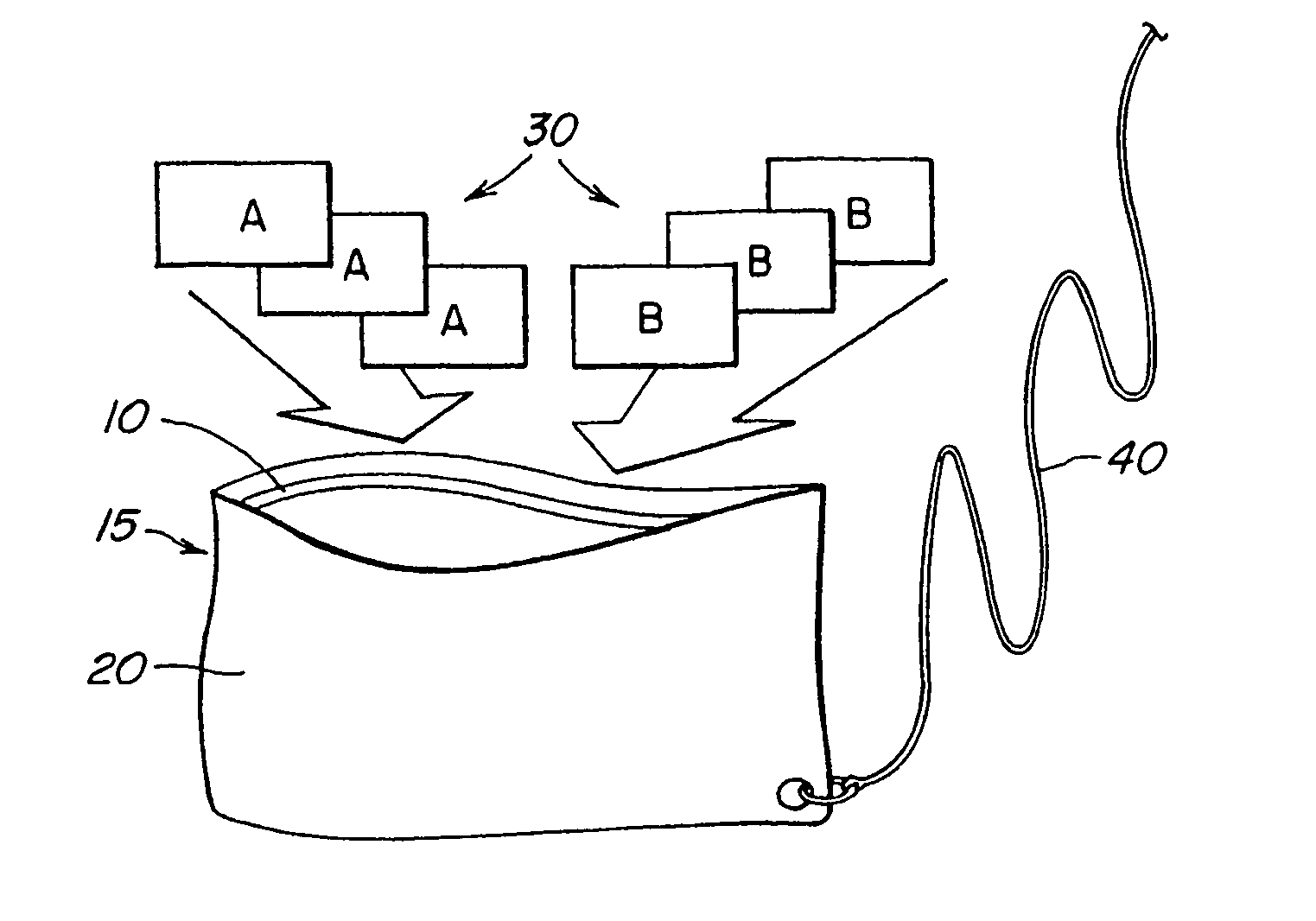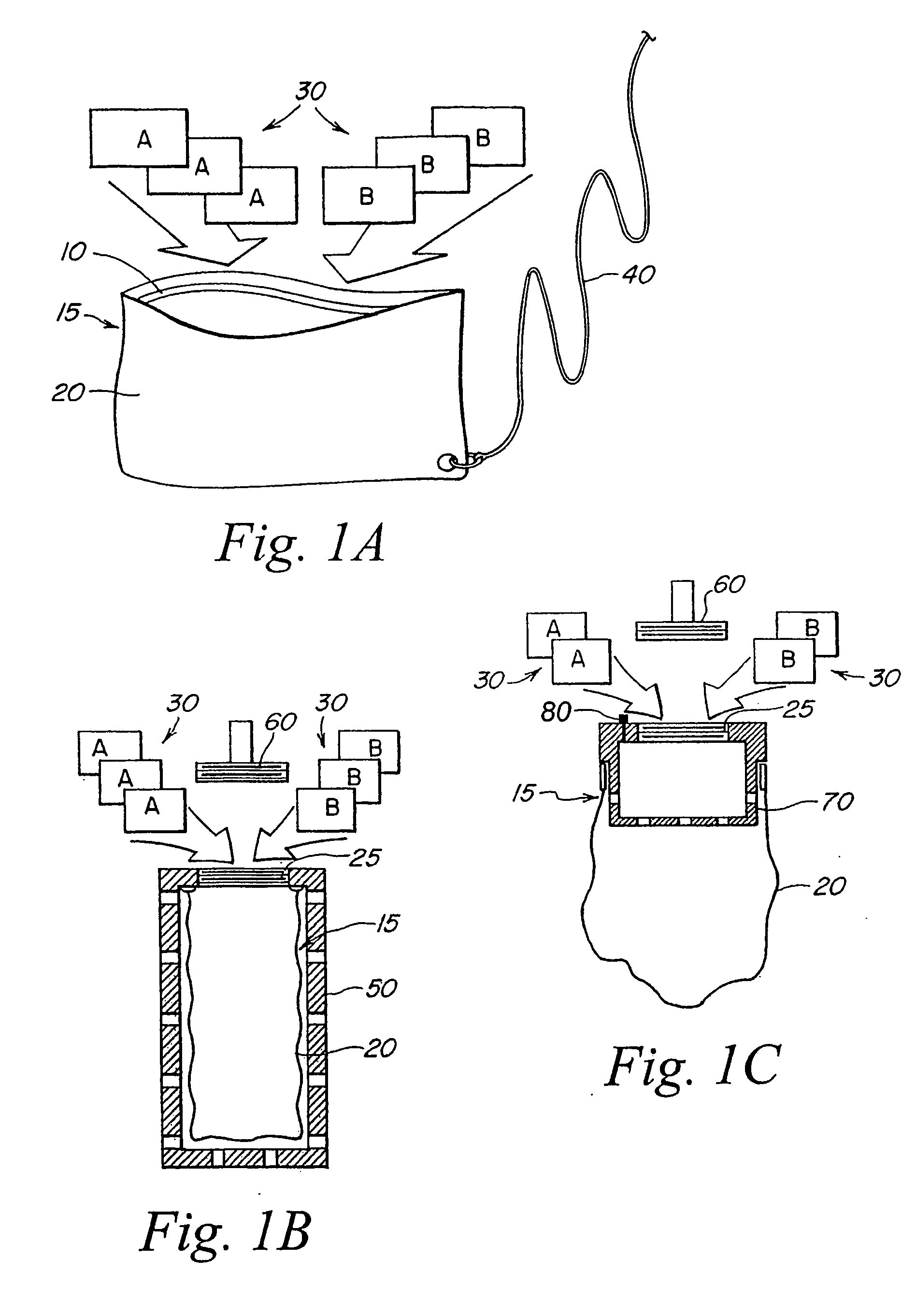Reusable apparatus for gas generation
a technology of gas generation and reusable devices, applied in the direction of nitrogen oxides/oxyacids, halogen oxides/oxyacids, water/sewage treatment by oxidation, etc., can solve the problems of inefficiency of transportable devices for generating gas, unsatisfactory levels of byproducts or reactants, and inability to transport chlorine dioxide commercially as a concentrated gas for its use, etc., to achieve the effect of improving space economy, preserving resources and cos
- Summary
- Abstract
- Description
- Claims
- Application Information
AI Technical Summary
Benefits of technology
Problems solved by technology
Method used
Image
Examples
example 1
Construction and Re-Use of a Reusable Apparatus
[0122] Two reactant chambers were constructed, each 4.62 inches by 3 inches, and formed of Membrana ACCUREL® PP1E hydrophobic membrane sealed about three sides with one side open. Sachets of 3.5 inches by 2 inches, formed of Membrana polyethersulfone ACCUREL® Micro PES 6F hydrophilic membrane, were filled with 7.39 grams of dried citric acid monohydrate and sealed about their perimeter. A mixture of 95% technical sodium chlorite and 5% activated hydrotalcite was prepared.
[0123] For each of six reuses of the reactant chamber, one sachet containing citric acid in addition to 4.95 grams of the mixture of technical sodium chlorite and activated hyrdotalcite were placed in the reactant chamber. The open side of the reactant chamber was closed with polyvinylchloride strips and metal clamps as submerged in two liters of water. The generation of chlorine dioxide, as measured by the concentration of the chlorine dioxide in solution in which th...
example 2
Re-Use of a Reusable Apparatus Formed of Robust Material
[0124] A device of Membrana ACCUREL® PP V8 / 2 BP hydrophobic tube membrane of 5.5 mm inner diameter with a wall of 1.55 mm thickness and 6.0 cm length was sealed at one end. The device was filled with 279 mg of dried citric acid monohydrate and 185 mg of a mixture consisting of 80% technical sodium chlorite and 20% activated hydrotalcite. The open end was sealed such that the length of the tube (not having the seals at both ends) was 4.5 cm long. The filled tube was immersed in 450 ml of water. The chorine dioxide generated was measured as chlorine dioxide concentration in the solution surrounding the device. The experiment was repeated three times. The chlorine dioxide generation is depicted in FIG. 7.
PUM
| Property | Measurement | Unit |
|---|---|---|
| pore size | aaaaa | aaaaa |
| pore size | aaaaa | aaaaa |
| pore size | aaaaa | aaaaa |
Abstract
Description
Claims
Application Information
 Login to View More
Login to View More - R&D
- Intellectual Property
- Life Sciences
- Materials
- Tech Scout
- Unparalleled Data Quality
- Higher Quality Content
- 60% Fewer Hallucinations
Browse by: Latest US Patents, China's latest patents, Technical Efficacy Thesaurus, Application Domain, Technology Topic, Popular Technical Reports.
© 2025 PatSnap. All rights reserved.Legal|Privacy policy|Modern Slavery Act Transparency Statement|Sitemap|About US| Contact US: help@patsnap.com



